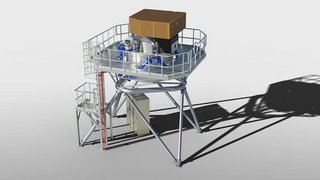The ‘Mid-infrared ELT Imager and Spectrograph’ (METIS) for the Extremely Large Telescope has passed its Preliminary Design Review at the European Southern Observatory’s (ESO) headquarters in Garching, Germany. This is an important milestone in the design and definition of the astronomical instrument. The Preliminary Design Review critically defines the maturity of the project and its continuation to the next phases of development. It was led by ESO and supported by several external experts from international institutions.
Once the Extremely Large Telescope is in operation, METIS will study a wide range of science topics, from objects in our Solar System to distant active galaxies. The instrument will be extremely well suited to study the life cycle of stars, from infant stars and planet-forming discs to older stars near the end of their lifetime.
The University of Cologne participates as a full partner in the METIS project. Among other things, the instrument will serve as a major tool for infrared observational astrophysics in Cologne. For its contribution, the UoC’s Institute for Astrophysics has also recently been awarded a three-year extension of funding totalling 1.2 million euros from the German Federal Ministry of Education and Research (BMBF) in the call ‘Universum’. The team in Cologne, which is led by the astrophysicist Professor Lucas Labadie, contributes to the METIS instrument with the development of the Warm Calibration Unit sub-system. This important sub-system provides the tools to verify and calibrate the METIS instrument during the integration phase and the operation phases.
Currently under construction on Cerro Armazones in the Chilean Coast Range at an altitude of 3,046 metres, the Extremely Large Telescope will be the largest optical to mid-infrared telescope on Earth when completed. First light is planned for the middle of this decade. With its 39-metre primary mirror and advanced adaptive-optics systems, the ‘world’s biggest eye on the sky’ will have six times the resolution of the James Webb Space Telescope, which is currently being built by NASA to replace the Hubble Space Telescope.
The imager and spectrograph METIS will probe the structure and composition of objects with revolutionary precision. The light spectrum of stars and objects in space reveal their chemical composition and provide information about physical conditions such as temperature and density. Last but not least, it allows scientists to make inferences about the motion of stars and objects.
METIS is also expected to make significant contributions to one of the most dynamic and exciting fields of astronomy for both scientists and the public: exoplanets. The instrument will be able to study the temperature, weather, and seasonal changes of the atmospheres of many giant exoplanets. Furthermore, METIS has the potential to directly detect terrestrial exoplanets around the nearest stars and, in favourable cases, investigate their atmospheric composition.
‘We are very enthusiastic that we are getting METIS in shape’, said Professor Lucas Labadie, the METIS co-investigator at the University of Cologne. ‘There is still a lot of work to be done with the team, but we are getting closer and closer. Our understanding of many of the most important astrophysical questions concerning the formation of galaxies or the evolution of young extrasolar systems will be greatly improved.’
At mid-infrared wavelengths, where our eyes are completely blind, an incredibly rich spectrum of chemical components and dust will be revealed to us. ‘METIS opens the mid-infrared range to the highest spatial resolution ever
achieved with single mirrors in the history of astronomy’, said Professor Andreas Eckart, a member of the Cologne team. ‘We will study in great detail the properties of gas and dust in distant active galaxies, or even close to the centre of our own Galaxy.’
The METIS consortium is composed of almost 100 researchers, engineers, and technicians based in Austria, Belgium, France, Germany, the Netherlands, Portugal, Switzerland, Taiwan, the United Kingdom and the United States. The project team foresees the on-sky deployment of METIS around 2028.
Media Contact:
Professor Lucas Labadie
Institute for Astrophysics
University of Cologne
+49 221 470-3493
labadieph1.uni-koeln.de
Press and Communications Team:
Eva Schissler
+49 221 470-4030
e.schisslerverw.uni-koeln.de
More information:
https://www.eso.org/public/teles-instr/elt/
https://astro.uni-koeln.de/labadie
